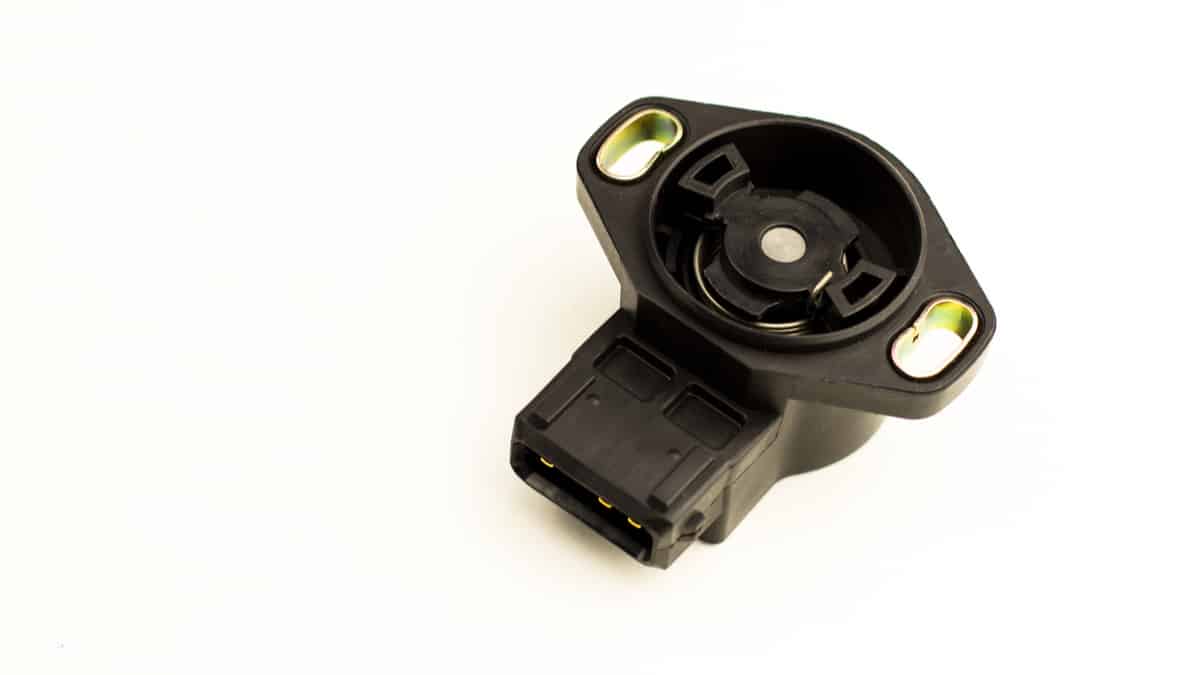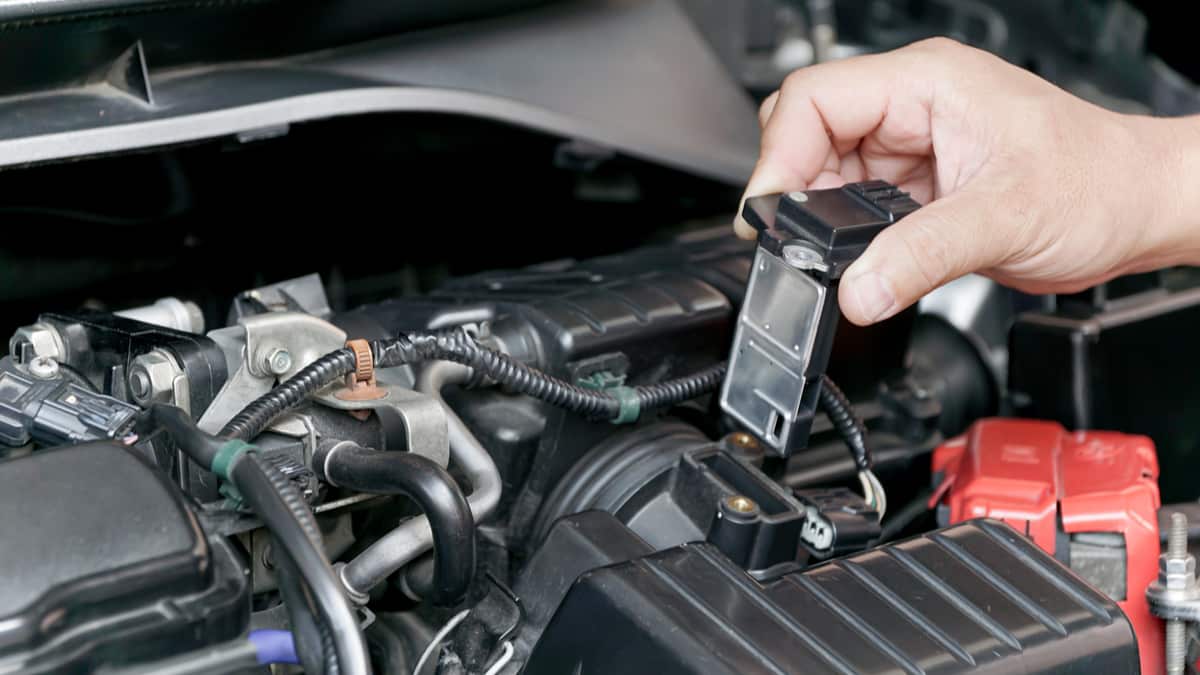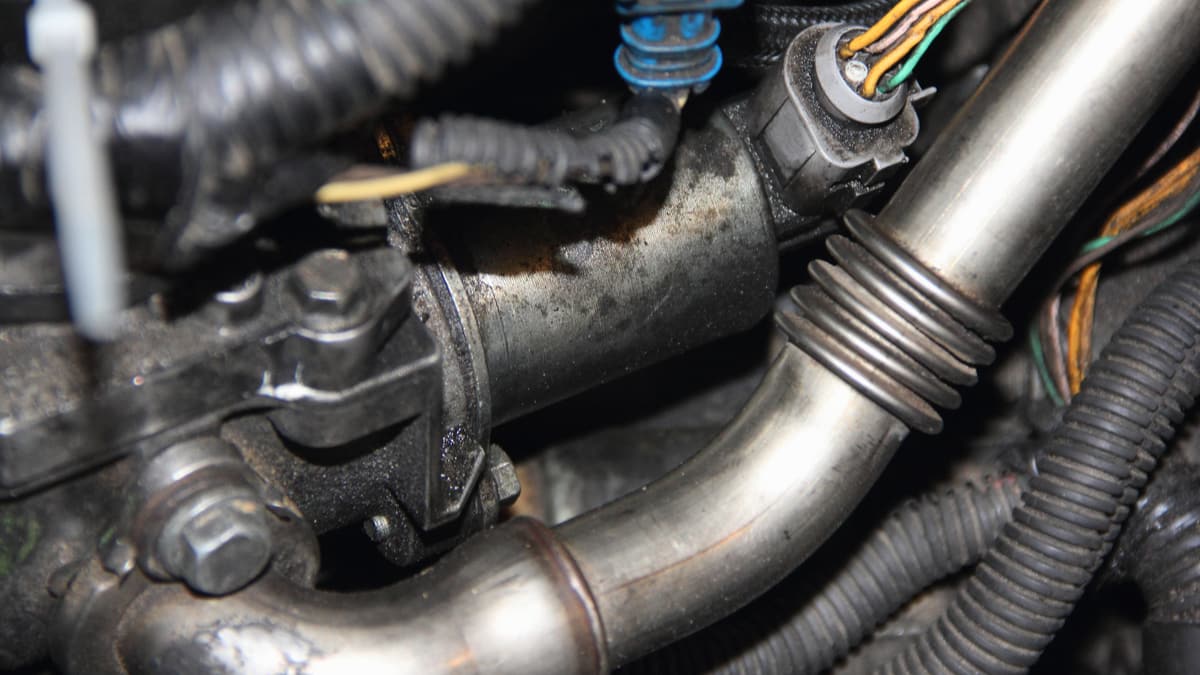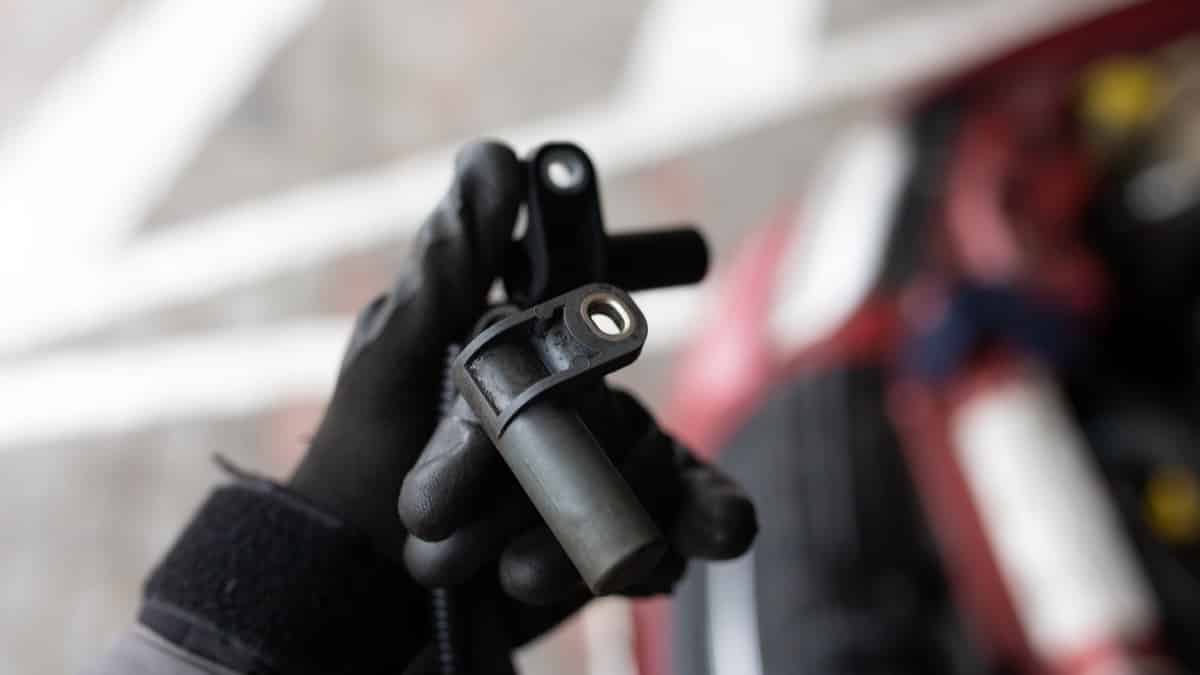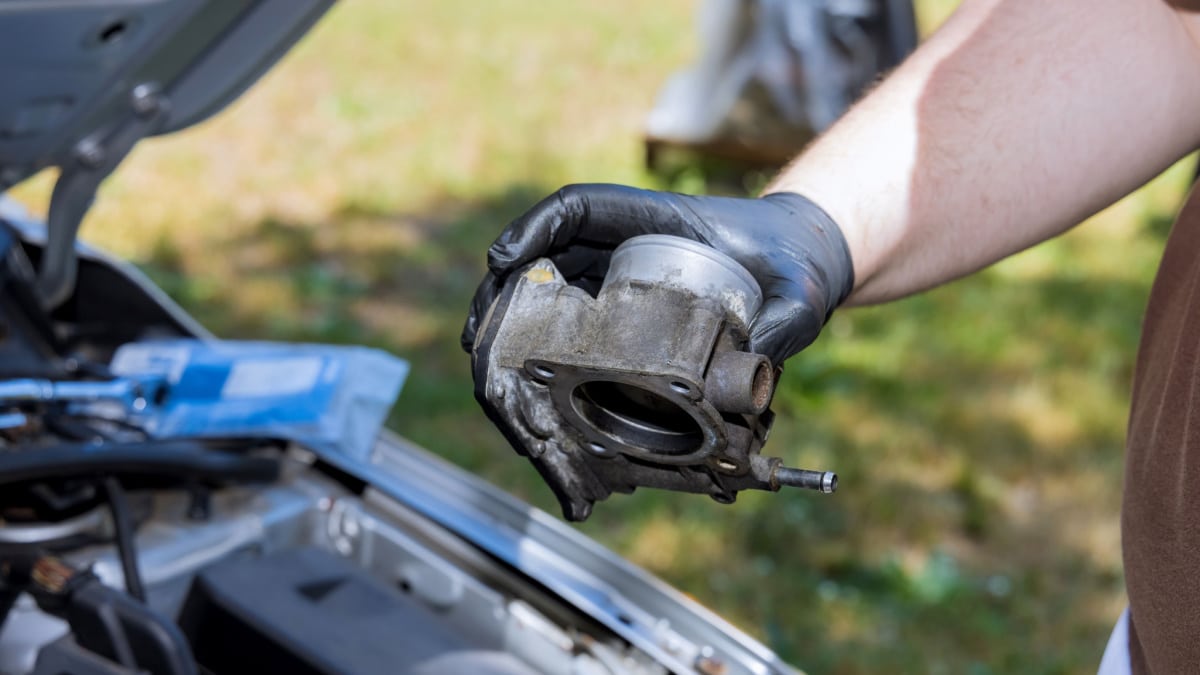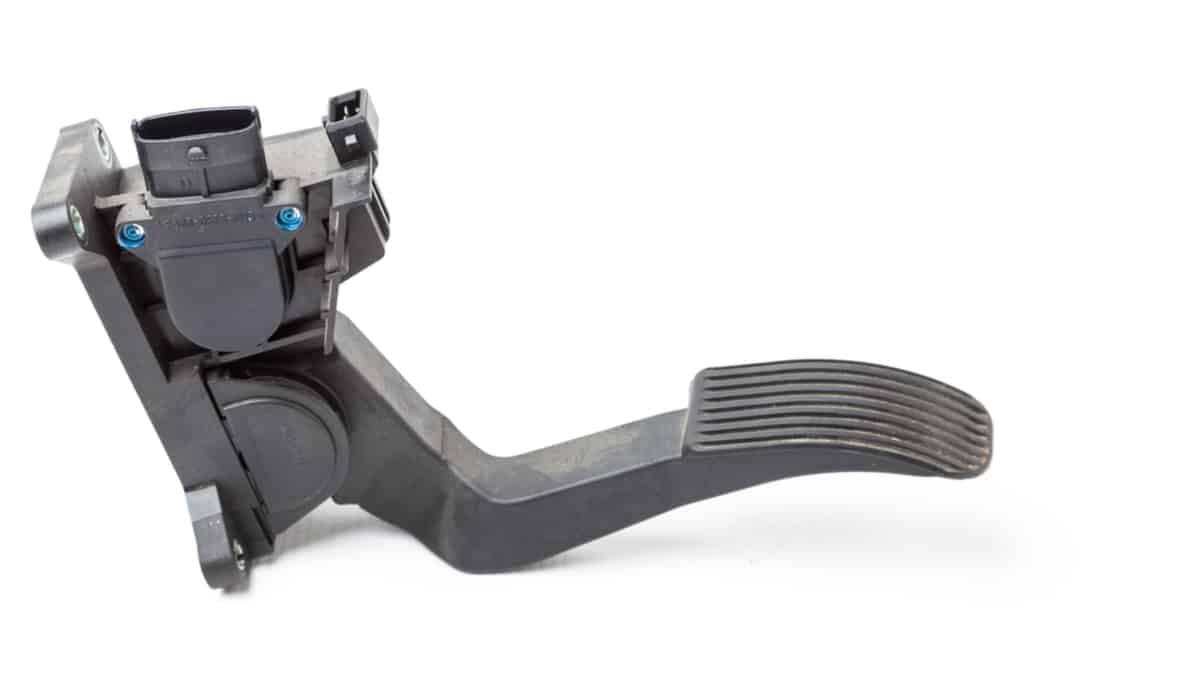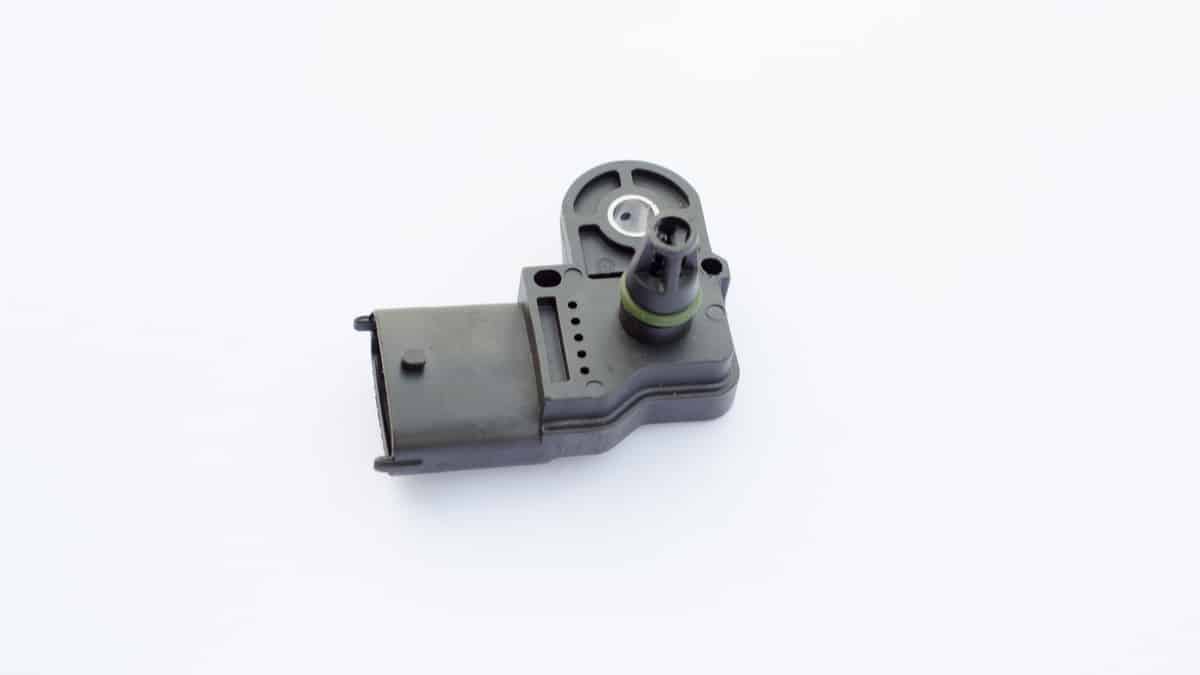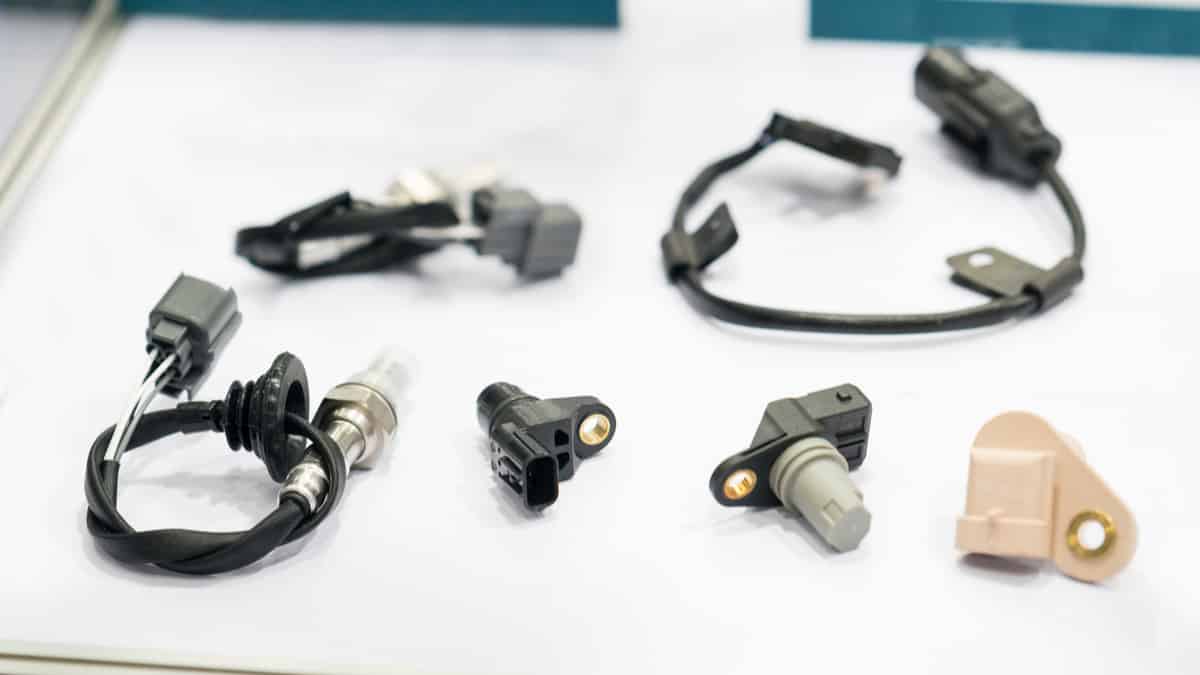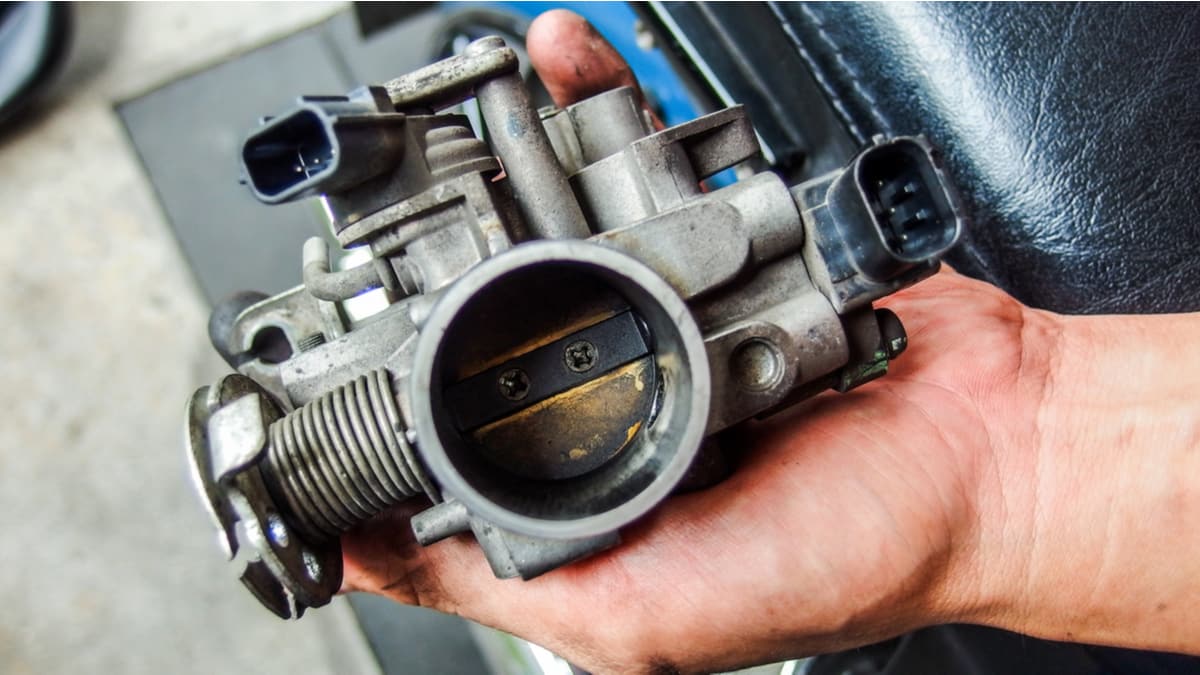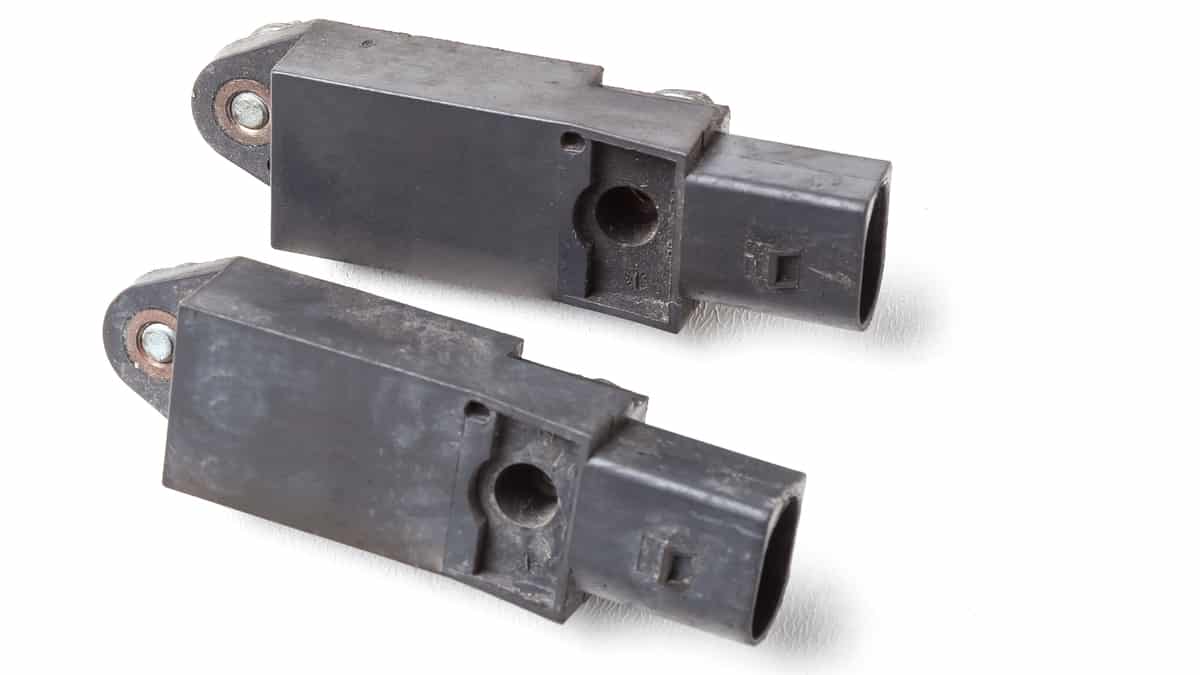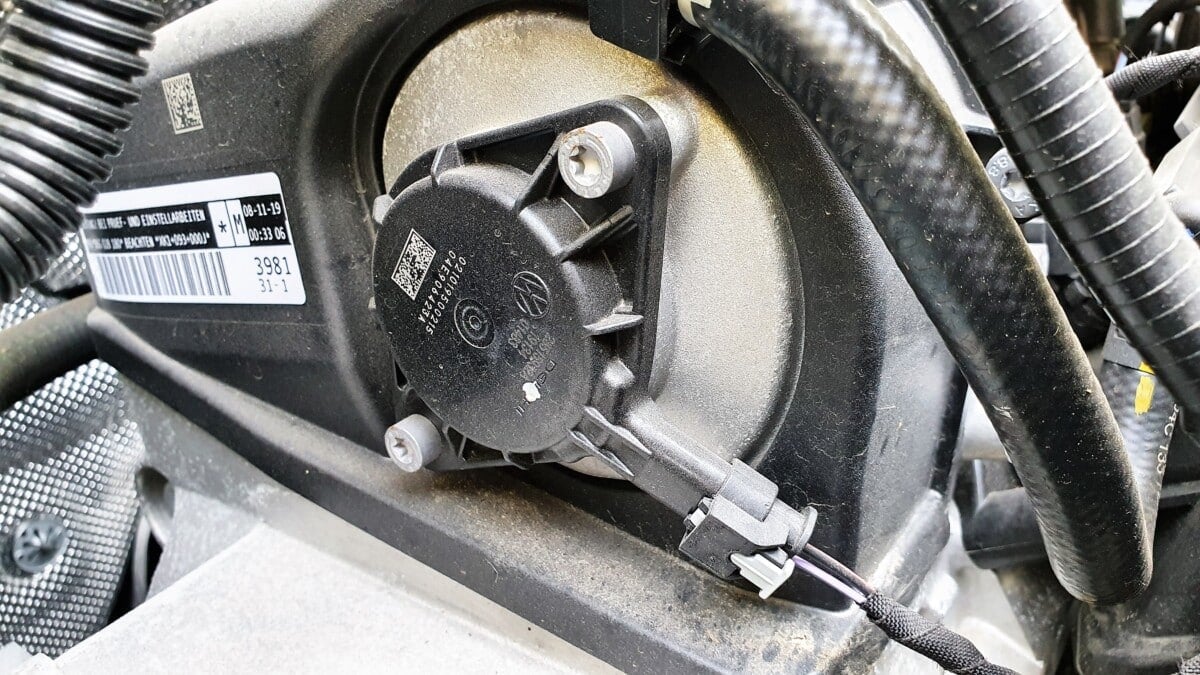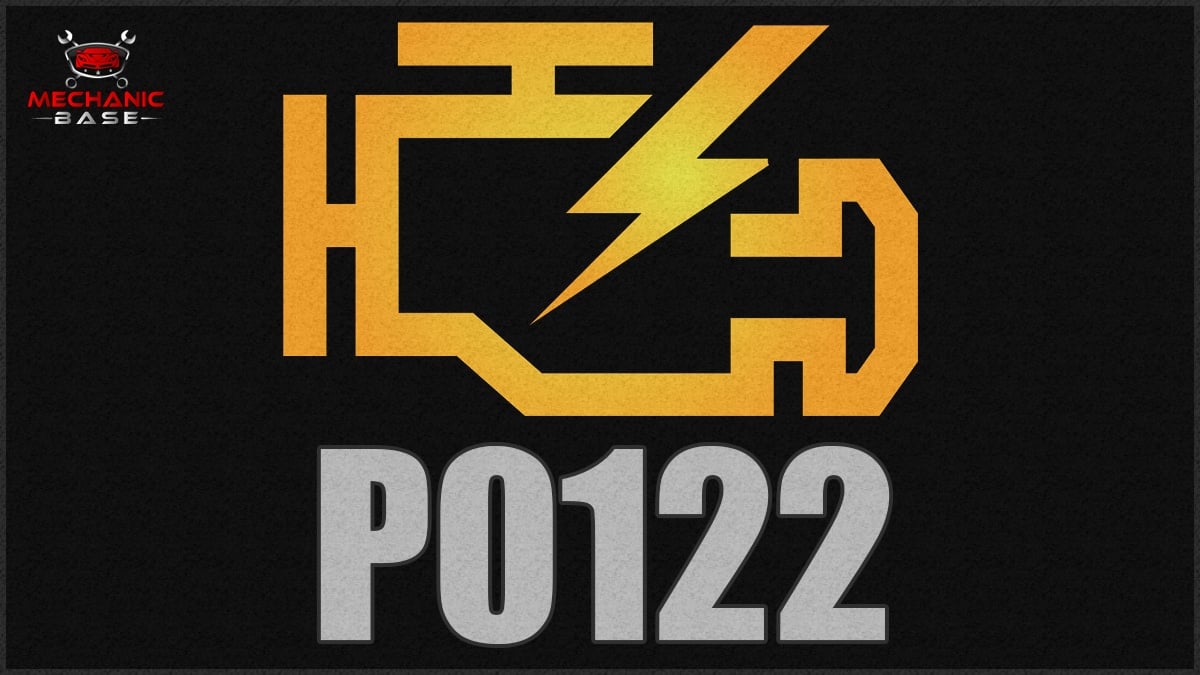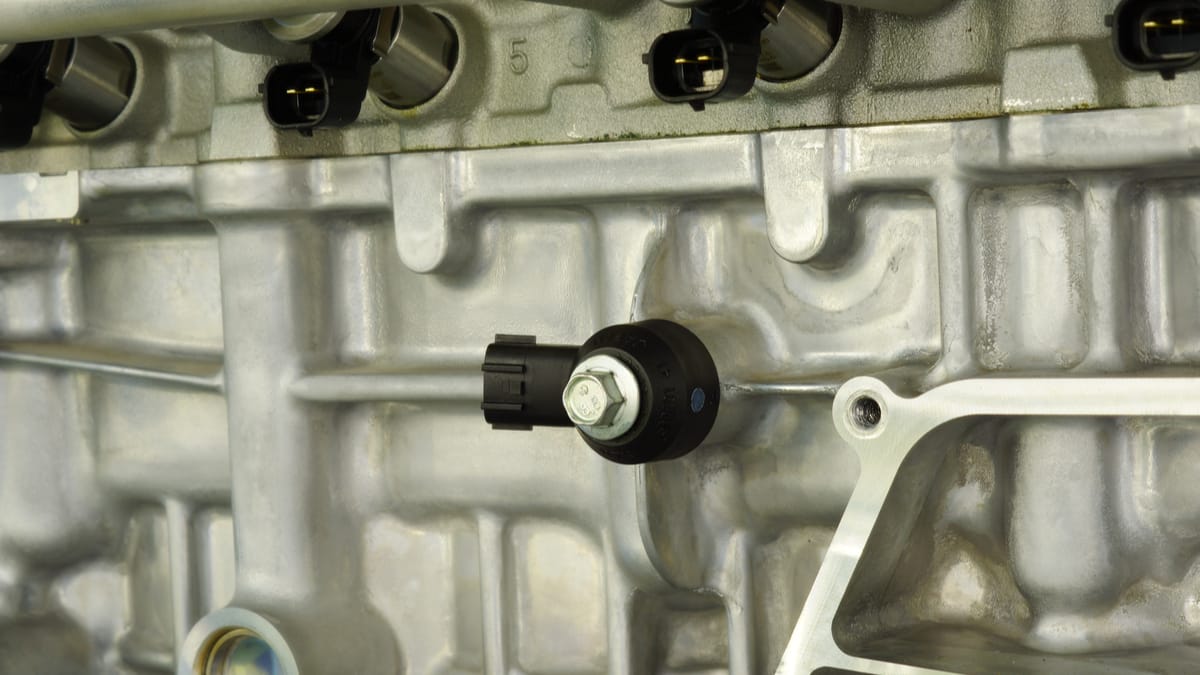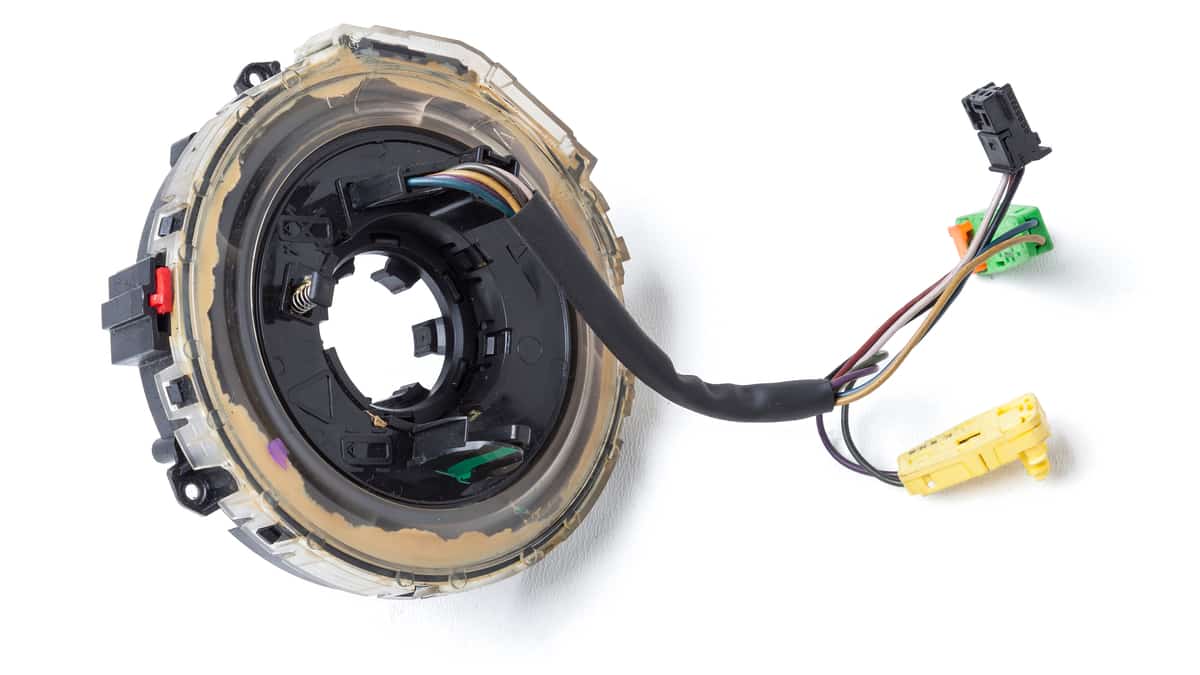The Throttle Position Sensor (TPS) monitors the operation of the throttle valve. Because this part has such a profound effect on the way your car engine runs, it’s important to know the symptoms of a bad throttle position sensor.
In this guide, we cover the bad throttle position sensor symptoms, so you can watch for signs of failure. We also show you where it’s located, discuss the function of the TPS and evaluate the replacement cost. At the end of this article, there are some answers to questions asked all the time.
Symptoms Of A Bad Throttle Position Sensor
When the Throttle Position Sensor (TPS) goes bad, the Check Engine Light comes on and you may experience a rough idle. It also creates an unresponsive throttle, a lack of power, increased fuel consumption and can lead to gear shifting issues if it’s not resolved.
These are six of the possible symptoms you may notice when the Throttle Position Sensor (TPS) goes bad.
1. Check Engine Light
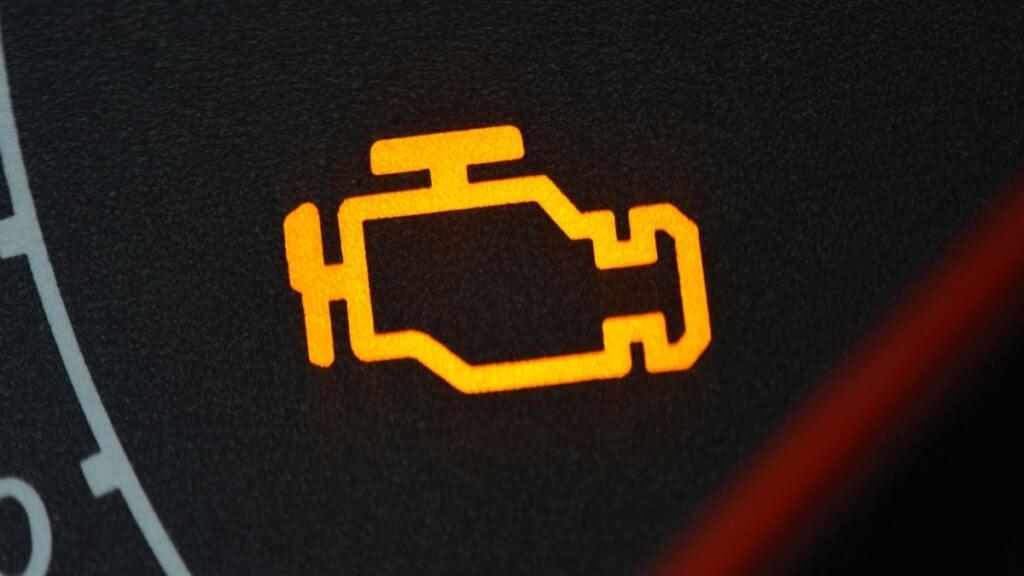
The Check Engine Light comes on when the TPS sends an incorrect reading to the computer. Because the TPS is monitoring the throttle plate, any malfunction will be registered. The throttle plate is responsible for controlling how much air gets into the engine, so it needs to be operating correctly for the engine to continue performing.
If there’s a loose connector to the TPS or the sensor fails to measure the throttle function, the light will come on the dashboard and a code will be set in the system. You can read these codes with your compatible scanner.
2. Rough Idle
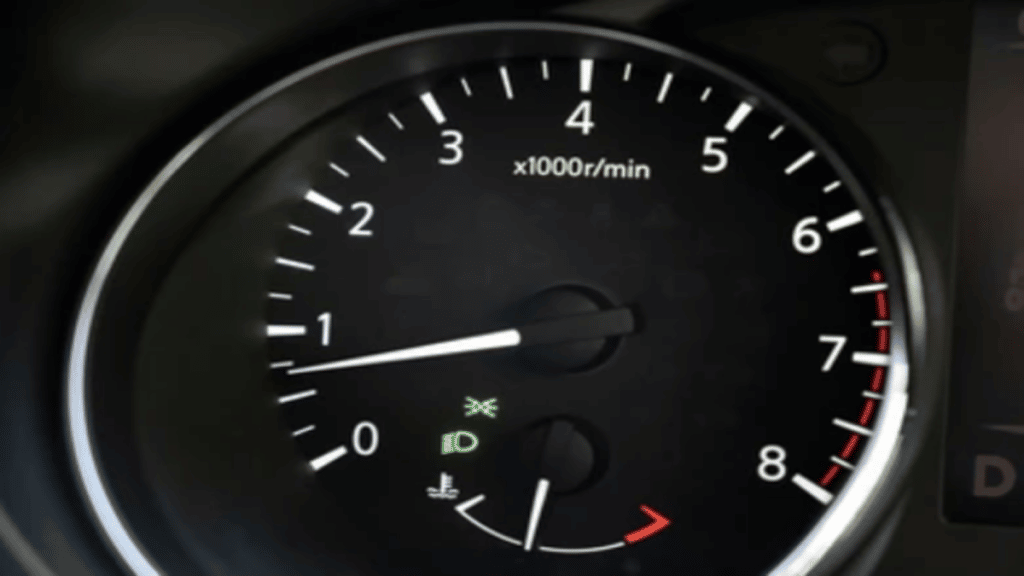
If there’s a malfunction with the measurement or reporting of the TPS, you may notice a rough idle. Without the right information or when the engine doesn’t get the air it needs, the motor can stall.
You may notice a rougher idle just after starting the engine. It can also occur after you push down on the accelerator pedal. Depending on what’s going on, you may notice that the idle is normal at times. For example, you may not notice any idle issues while the car is sitting in Park.
Make sure you check around the throttle because contaminants and dirt buildup can lead to an erratic idle speed. Cleaning off the throttle would be an easy fix to the problem.
3. Unresponsive Throttle
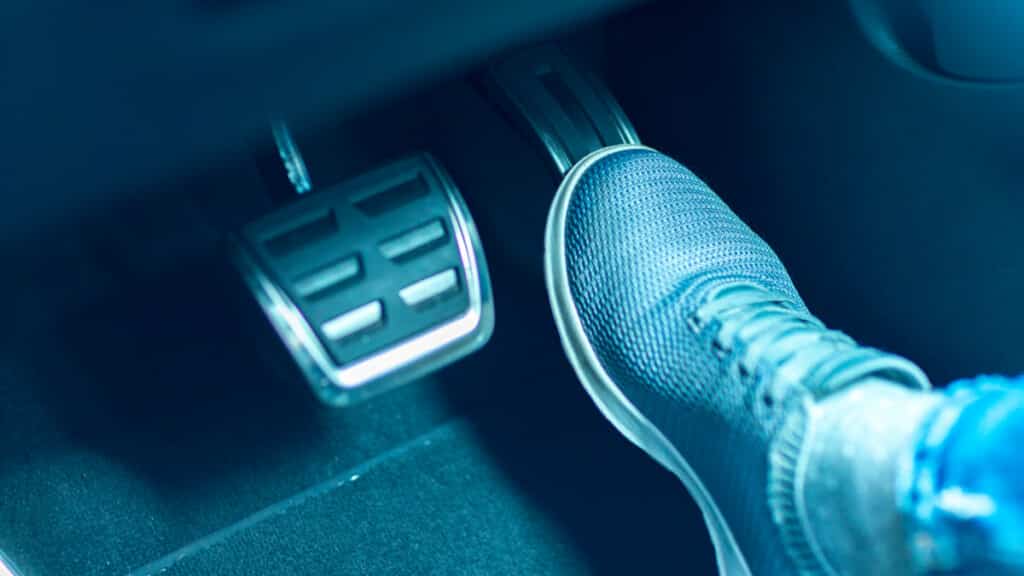
The TPS helps to determine engine power. If there’s a malfunction, you may have trouble getting the car to go faster when you push down on the pedal. Acceleration can be uneven or it will stop after a certain speed. This problem can be dangerous, especially if you are attempting to merge with heavy traffic and you need the car to start moving.
On the other hand, the opposite of an unresponsive throttle can also occur. The car can start accelerating without your input.
4. Lack Of Power
If the throttle angle or valve position isn’t properly reported, too much air can get into the air-fuel mixture. This imbalance leads to a lack of power, especially during acceleration, as mentioned above.
This lean-running condition makes it difficult to get the power out of your car it should be giving you. If you are in a hurry or want to get the car up to highway speeds, this can be even more frustrating.
5. Increased Fuel Consumption

With the false readings coming from the TPS, the engine is going to consume too much fuel. While the average fuel economy is determined and confirmed by the U.S. Department of Energy, your car is going to fall short of its average rating.
What may start out as a minor decrease in fuel economy can quickly change to dramatic consumption. Yet, even with a few mpg less, you are going to be spending more on fuel. If you need to get fuel 20 miles sooner than you should have, that’s going to add up.
6. Gear Shifting Issues
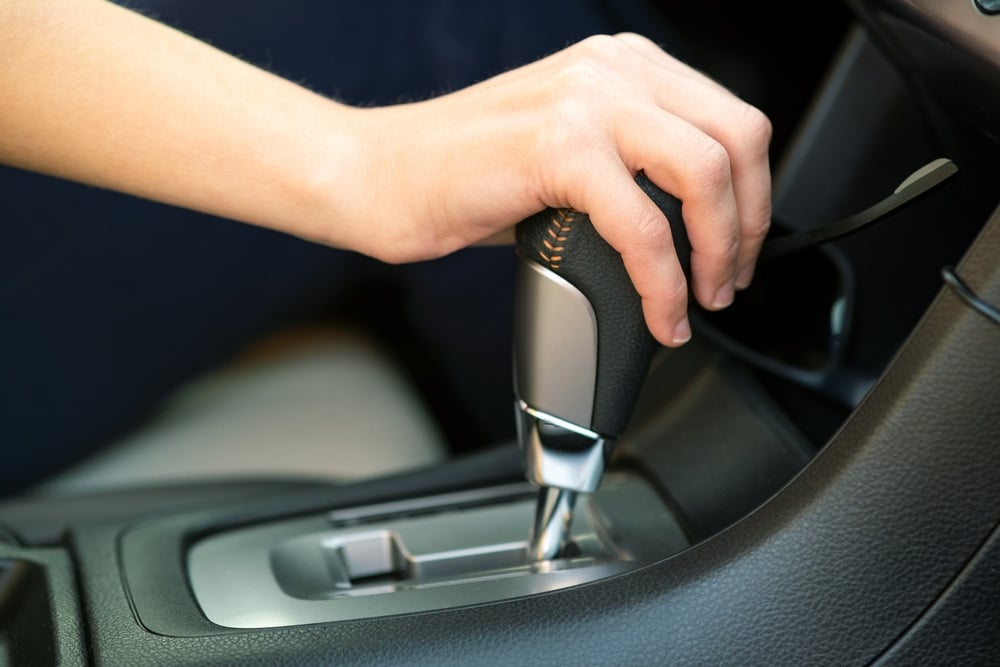
TPS failure doesn’t always happen smoothly. If erratic signals are being sent to the computer, you may notice strange issues with the car. At times, it could feel like you are releasing and applying the gas pedal rapidly, causing the car to shift unnaturally. This can create a bucking feeling.
In severe cases, the car can also go into limp mode. This vital safety feature keeps the engine and transmission protected, but it also makes it impossible to shift out of a certain gear. You should only drive a car in limp mode a short distance, either to get home or to a local repair shop.
What’s The Function Of A Throttle Position Sensor?
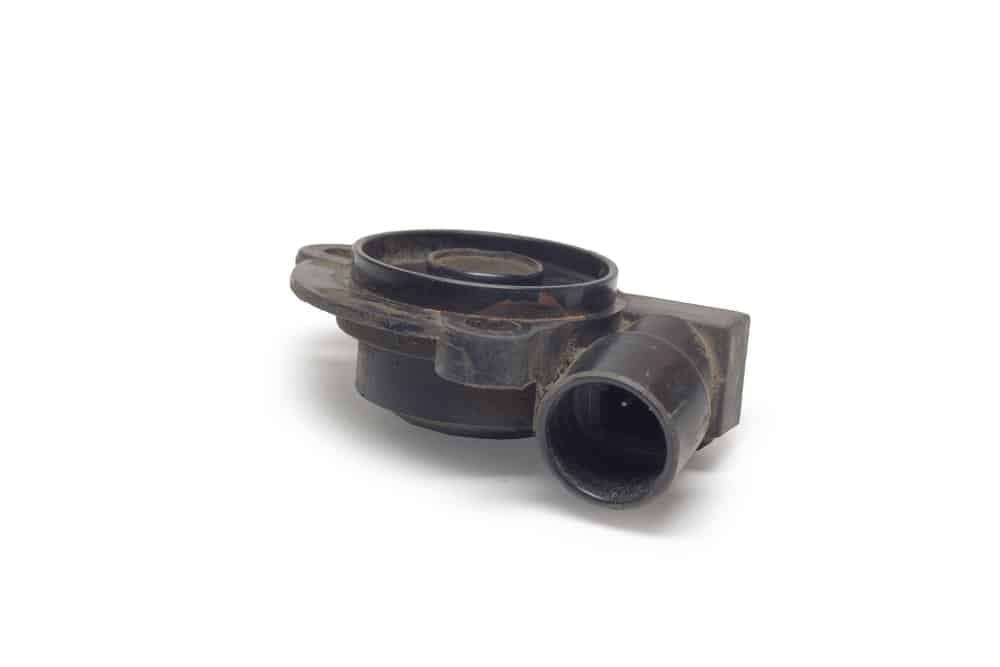
The throttle position sensor is also called the throttle valve position sensor or TPS. This vital part belongs to the electronic throttle control system. Because it’s connected to the throttle body, it can measure the angle of the throttle.
Your car’s throttle body connects to the gas pedal with a cable wire. When depressed, the throttle shaft moves and a signal is sent to the sensor. The sensor monitors the variable resistance based on the angle of the throttle valve opening. When the throttle is open wide, the sensor sends a 4.5-volt output to the ECU (on average).
As soon as the Engine Control Module (ECM) or Engine Control Unit (ECU) recognizes what’s happened, the Mass Air Flow Sensor should detect the increase in air supply. From here, the ECU manages the air-fuel ratio by adding more fuel to combine with the air. It also triggers the spark plugs to ensure ignition happens at the right time.
In some cars, the TPS operates slightly differently. In these cases, magnetic fields are used to shift as the throttle closes or opens. You can learn more about the system your vehicle uses by reading the service manual.
Where Is The Throttle Position Sensor Located?
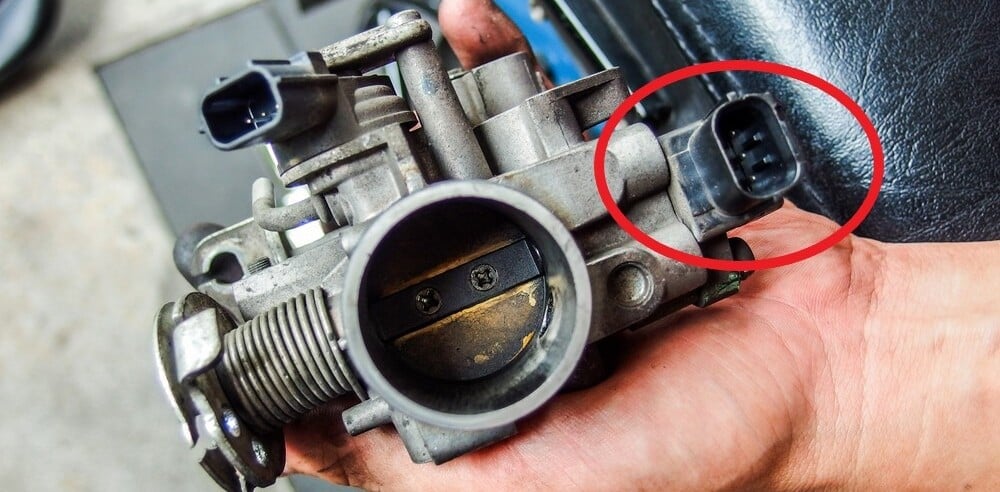
The TPS mounts to the throttle body. The throttle valve is housed within the throttle body.
The throttle body can be found between the intake manifold and the air cleaner of the engine. The throttle opening (butterfly valve) helps to control engine power by regulating how much air is entering the engine.
How Do You Test A Throttle Position Sensor?
The easiest way to see what’s going on with the throttle position sensor is to run the codes from the computer. If the throttle position sensor sends a low voltage signal (less than 4.5 volts), the ECU or ECM usually triggers these codes:
- P0120 – Throttle/Pedal Position Sensor/Switch “A” Circuit
- P0121 – Throttle/Pedal Position Sensor/Switch “A” Circuit
- P0122 – Throttle/Pedal Position Sensor/Switch “A” Circuit Low
- P0123 – Throttle/Pedal Position Sensor/Switch “A” Circuit High
- P0124 – Throttle/Pedal Position Sensor/Switch “A” Circuit Intermittent
If you see trouble codes that you can’t figure out, research may be needed. We recommend using our online trouble code library to learn more. These articles have been put together by our top mechanics, ensuring you get an accurate diagnosis of your problems.
An ohm meter can also be used to test the switch/combination-type throttle position sensor, while a volt meter is helpful for potentiometer types. Check the resistance with the throttle in several positions. Record the resistance and compare these values against what’s stated in your car service manual. If you notice any discrepancies, it might be time to replace the throttle position sensor.
How Do You Reset A Throttle Position Sensor?
There are several different methods for resetting a throttle position sensor. The one you need to do depends on what type of vehicle you drive. With some car models, you can reset it by disconnecting the battery, but this method also means that stereo presets, seat memory and other functions will also be reset.
With other cars, a diagnostic scanning tool is needed to reset and calibrate it. However, the cheap scan tools aren’t going to cut it. You need to purchase a more advanced model for this function.
How Much Does It Cost To Replace A Throttle Position Sensor?
On average, expect to spend between $125 and $250 for throttle position sensor replacement. The parts may cost $75 to $150, while the labor adds $50 to $100.
Replacing the throttle position sensor isn’t normally a complicated job. Therefore, you may be able to perform the replacement at home and save money on the labor charges.
Is it OK to drive with a bad throttle position sensor?
It’s not safe to drive with a bad throttle position sensor, as the acceleration can be erratic. If the car suddenly accelerates without warning, you could cause an accident and become injured. If there’s something wrong with the sensor, just have it replaced. For the cost, it’s not worth all of the danger.
Can I replace the TPS sensor on my own?
Yes, it’s not a difficult job to perform. We recommend following the procedures set in your car’s service manual. If you don’t have the right tools or aren’t experienced, it’s best to leave the replacement to professional mechanics instead. You shouldn’t need to pay for more than an hour of labor with most cars.
Does a bad throttle position sensor throw a code?
Yes, when the throttle position sensor sends incorrect information to the computer, a code will be set. You may see P0120, P0121, P0122, P0123, P0124 or some other code with your compatible scanner. This information, in conjunction with the symptoms, will tell you if the throttle position sensor is bad.
How long does it take to replace the throttle sensor?
A qualified mechanic should be able to complete the throttle position sensor replacement within an hour on most vehicles. If you want to perform the replacement yourself, allow for a little extra time since you probably aren’t working with professional tools and equipment.
How often do throttle position sensors go out?
The throttle position sensor doesn’t get replaced as part of regular car maintenance. It’s expected to last for the lifetime of the vehicle but is known to fail prematurely. On average, you shouldn’t need to replace the TPS more than once in the life of a vehicle.
The throttle position sensor isn’t a well-known car part, mainly because it doesn’t tend to go bad often. Yet, when this vital sensor does fail, it causes a lot of performance issues. With trouble accelerating, the drop in fuel economy and a rough idle, the drive isn’t going to be enjoyable while this problem occurs.
Therefore, you want to replace the throttle position sensor at the first sign of failure. You can attempt the repair on your own to save a little money or schedule with a mechanic if you aren’t sure how to replace it. After the simple fix, your car will be ready for the road once again.
Categories: Engine
